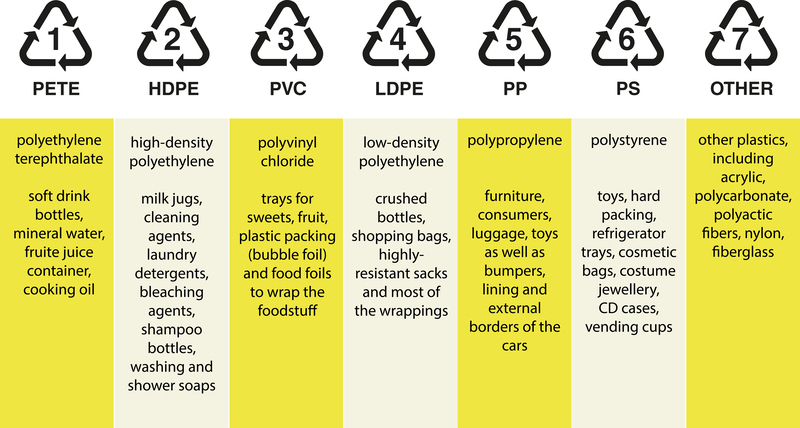Master the Art of Recycling: Transform Your Home into a Green Haven
Are you eager to reduce your environmental footprint and create a more sustainable future? Mastering the art of recycling is the first step toward transforming your home into a true green haven. In today's world, where environmental consciousness is more important than ever, implementing efficient recycling habits can make a significant difference. This comprehensive guide will walk you through practical, actionable strategies to help you embrace eco-friendly living, minimize waste, and create a healthier environment for you and your loved ones.
Why Recycling Matters: The Foundation of a Green Home
Before exploring how to revolutionize your household waste management, it's important to understand why recycling is crucial to a sustainable lifestyle:
- Conserves Natural Resources: Recycling reduces the pressure on forests, minerals, and fossil fuels by reusing materials.
- Reduces Landfill Waste: Effective recycling curbs landfill overflow, protecting soil and water from pollution.
- Saves Energy: Manufacturing products from recycled materials requires significantly less energy compared to using raw resources.
- Lowers Greenhouse Gas Emissions: Recycling helps mitigate climate change by reducing the amount of waste burnt or decomposing in landfills.
- Promotes a Circular Economy: It encourages the continuous use of materials, boosting both environmental and economic resilience.
Transforming your home into a green haven starts with simple, everyday decisions - and recycling is at the heart of this transformation.

Getting Started: Setting Up a Proactive Recycling System at Home
If you want to master recycling, the first phase involves establishing a user-friendly system. Consider these essential steps:
1. Understand Local Recycling Guidelines
Not all municipalities have the same recycling rules. Visit your local government's website or contact your sanitation department to:
- Learn which materials are accepted (paper, plastics, glass, metals, etc.).
- Clarify sorting requirements (single vs. multi-stream programs).
- Identify drop-off centers for items not collected curbside (batteries, electronics, hazardous waste).
2. Choose the Right Bins and Placement
To foster habit formation, place recycling bins in convenient locations such as the kitchen, home office, and garage. Label each bin clearly (using both text and symbols for easy identification). Color-coded bins can help everyone - from toddlers to adults - sort items effortlessly.
3. Remove Contaminants
Contaminated recyclables can render entire batches unsuitable for recycling. It's essential to:
- Rinse bottles, jars, and containers to remove food residues.
- Keep paper and cardboard clean and dry.
- Eliminate non-recyclables (plastic bags, soiled wrappers, greasy pizza boxes) from recycling bins.
4. Educate & Involve the Household
Recycling is most successful when everyone participates. Hold a family meeting to explain the new system and regularly remind everyone of best practices. For children, consider creative incentives such as recycling charts or eco-themed rewards.
Advanced Strategies: Going Beyond the Basics
Once you've established a strong recycling routine, expand your efforts to incorporate waste reduction and innovative upcycling. Here's how you can master recycling to the next level:
Upcycling: Give Old Items New Life
- Furniture Makeovers: Transform old dressers, chairs, or tables with paint, decoupage, or new fixtures instead of discarding them.
- Glass Jar Creations: Repurpose glass jars into storage containers, candle holders, or planters.
- Creative Kids' Crafts: Turn cereal boxes, egg cartons, and bottle caps into art supplies, costume pieces, and science projects.
Composting: Turning Organic Waste into Gold
Composting is the perfect complement to traditional recycling:
- Designate a kitchen pail for food scraps (fruit peels, coffee grounds, eggshells).
- Create a backyard compost pile or use a bin to decompose organic waste.
- Use finished compost in your garden to enrich the soil and boost plant health.
E-Waste and Hazardous Materials: Responsible Disposal
Electronics, batteries, and chemicals require special handling. Donate working electronics, locate community e-waste drop-off days, or visit specialized recycling centers. Always ensure paint, aerosols, and fluorescent bulbs are safely managed.
Transform Your Lifestyle: Embrace the Zero-Waste Mindset
To truly master the art of recycling and convert your home into a sustainable sanctuary, consider integrating zero-waste principles:
- Refuse: Say no to unnecessary packaging, single-use plastics, and freebies you won't use.
- Reduce: Buy in bulk, choose products with minimal packaging, and avoid impulse purchases.
- Reuse: Prefer durable, reusable alternatives such as cloth napkins, glass water bottles, and shopping totes.
- Repurpose: Find creative ways to use items that might otherwise be thrown away.
- Recycle: Only after exploring all options, recycle whatever you can't refuse, reduce, or reuse.
Engage in Community Initiatives
Amplify your impact by getting involved in neighborhood cleanups, starting a community composting program, or hosting recycling workshops. You'll drag more people into the green lifestyle, build community spirit, and multiply your positive effect on the environment.
Eco-Friendly Product Swaps: Upgrade Your Household for Sustainability
Making simple product switches can dramatically lessen your household's waste output. Here are some effective eco-friendly swaps for your green haven:
- Switch to Reusable Bags: Replace single-use plastic bags with canvas or recycled-material tote bags.
- Choose Refillable Products: Invest in refillable cleaning sprays, soaps, and shampoo bottles.
- Buy Compostable Alternatives: Opt for compostable trash bags, food wraps, and cutlery.
- Invest in Energy-Efficient Appliances: Newer, Energy Star-rated appliances save power and reduce e-waste over time.
- Try Eco-Friendly Cleaning Products: Many traditional cleaners contain harsh chemicals. Choose plant-based or DIY alternatives to protect waterways and indoor air quality.
Common Recycling Mistakes (& How to Avoid Them)
Even well-intentioned recyclers sometimes get tripped up by these frequent errors. Learn to spot and avoid them:
- Wishcycling: Placing non-recyclables in the bin with the hope they'll be recycled (e.g., plastic bags, greasy containers).
- Improper Preparation: Forgetting to rinse containers or leaving caps on bottles can spoil recycling loads.
- Mixing Materials: Combining glass, plastic, and paper without separating them when your local facility requires sorting.
- Neglecting Hazardous Waste: Tossing batteries, electronics, or chemicals with your curbside recycling contaminates the stream and endangers workers.
Always check local rules, prepare items properly, and err on the side of caution - when in doubt, find out!
Innovative Recycling Ideas for Every Room
Kitchen
- Set up separate bins: Make sorting recyclables, compost, and trash easy and convenient.
- Shop with recyclability in mind: Choose items with minimal or 100% recyclable packaging.
- Store leftovers in glassware: Reduce the need for plastic wrap or disposable containers.
Bathroom
- Recycle toiletry packaging: Many shampoo bottles and cardboard boxes can be recycled.
- Switch to package-free soaps and shampoos: Lush and other brands now offer zero-waste personal care products.
Home Office
- Repurpose scrap paper: Use the blank sides for notes and drafts.
- Participate in e-waste recycling: Properly recycle outdated electronics, toner cartridges, and batteries.
Laundry Room
- Choose concentrated detergents in recyclable packaging.
- Switch to wool dryer balls: They replace disposable dryer sheets and lower your carbon footprint.
Garage
- Store hazardous waste safely until proper disposal: Never put paint, automotive fluids, or chemicals in regular bins.
- Separate scrap metals: Take old tools, metal cans, and wires to a scrap yard or recycling event.
Measure Your Progress: Track Your Green Achievements
Celebrate your sustainability wins by keeping track of your recycling journey. Use a simple chart or app to:
- Monitor the amount of waste diverted from landfill each week or month.
- Set new goals: aim for less trash, more compost, or increased upcycling projects.
- Review the financial benefits: reduced garbage bills, fewer purchases, and possible rebates for recycled electronics or bottles.
Share your progress with friends and family; you'll inspire others and foster a culture of eco-friendly living!

The Benefits: How Recycling Transforms Your Home & Beyond
As you perfect your home recycling methods, you'll quickly notice a cascade of positive changes:
- Cleaner, safer living spaces with less clutter and hazardous waste.
- Reduced expenses thanks to smarter purchasing and fewer disposable items.
- An empowered household that feels good about making a difference, every single day.
- A smaller carbon footprint that contributes to a healthier planet for future generations.
Conclusion: Start Your Green Haven Journey Today
Mastering the art of recycling is more than just a household chore; it's a visionary way of life that cultivates respect for the earth and mindful consumption habits. By setting up a proactive recycling system, avoiding common pitfalls, upcycling creatively, and instilling a zero-waste mindset, you'll transform your home into a true green haven -- and inspire others to do the same.
Remember: the journey toward sustainable living is ongoing, filled with continual learning, improvement, and even a little fun. Every responsible choice you make sends ripples of change far beyond your doorstep. So, why wait? Embrace recycling today, and be the change you want to see in your home, your community, and the world!
Ready to master recycling and create your own green haven? Start with one step - and watch a world of difference unfold.